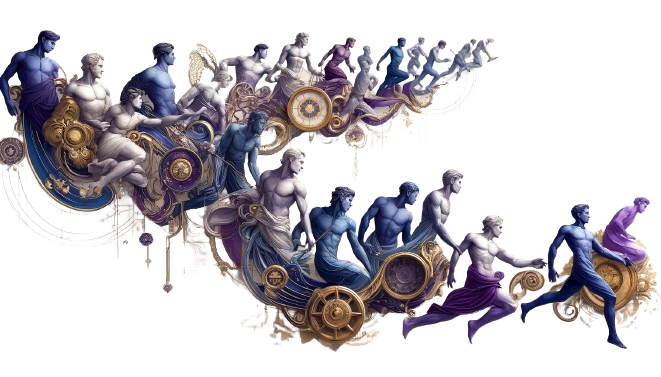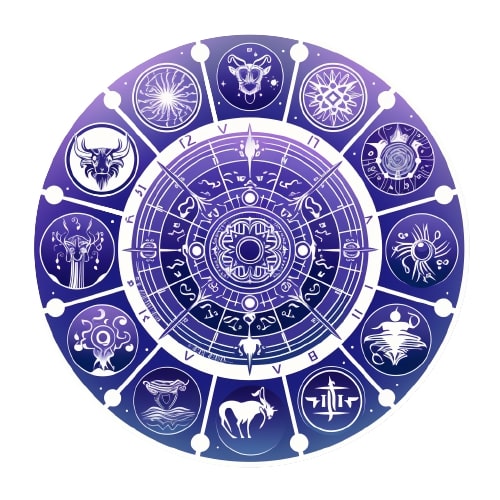Welcome to the captivating realm of planetary motion, where celestial bodies traverse the vast expanse of our solar system in a dance of cosmic proportions. The intricate movements of planets have fascinated astronomers for centuries, unraveling the mysteries of the celestial mechanics that govern their motion. In this article, we will explore the contrasting dynamics between direct and retrograde planetary motion, delve into Kepler’s laws of planetary motion, understand the influence of gravitational forces on planets, and examine the shift from the geocentric to the heliocentric model. Join us as we embark on a journey through the captivating world of planetary motion and unlock the secrets hidden within their celestial choreography.
Understanding Planetary Motion through Celestial Mechanics
The celestial mechanics principles govern planets’ intricate movements within our solar system. This branch of physics explores the mathematical equations and theories that explain the motion and orbits of celestial bodies, including planets.
Celestial mechanics provides the foundation for understanding the mesmerizing dance of planetary motion. It takes into account various factors, such as the gravitational forces exerted by the Sun and other celestial bodies, as well as the laws and principles established by astronomers and mathematicians throughout history.
One of the key highlights of celestial mechanics is the study of Kepler’s laws of planetary motion. These laws, developed by the renowned astronomer Johannes Kepler in the 17th century, revolutionized our understanding of how planets move in space.
- Kepler’s First Law: The law of elliptical orbits states that planets follow paths shaped like ellipses, with the Sun located at one of the foci of the ellipse.
- Kepler’s Second Law: The law of equal areas states that a line segment connecting a planet to the Sun will sweep out equal areas in equal amounts of time, meaning planets move faster when closer to the Sun and slower when farther away.
- Kepler’s Third Law: The law of harmonic motion emphasizes the relationship between a planet’s orbital period and its distance from the Sun, demonstrating that the square of a planet’s orbital period is proportional to the cube of its average distance from the Sun.
These laws, combined with the principles of celestial mechanics, enable scientists to accurately predict and describe the motion of planets, enhancing our comprehension of the complex interplay between celestial bodies within our vast universe.
Orbits of Planets
The orbits of planets are a fascinating aspect of celestial mechanics. Each planet follows a specific path around the Sun, known as its orbit. These orbits can be classified into two main types:
- Circular Orbits: Some planets, such as Venus and Earth, move in nearly circular paths around the Sun. These orbits are relatively close to being perfect circles, resulting in a stable and balanced motion.
- Eccentric Orbits: Other planets, like Mars and Jupiter, have orbits that deviate from perfect circles. These elliptical orbits introduce variations in the distance between the planet and the Sun, leading to changes in their speed and intensity of gravitational pull.
Understanding the diverse range of planetary orbits is crucial in deciphering the unique dynamics of planetary motion and the intricate interplay between celestial bodies within our solar system.
Kepler’s Laws: Unraveling Planetary Movement
To truly understand planetary movement’s intricate patterns and dynamics, we delve into Johannes Kepler’s laws of planetary motion. These laws, formulated based on extensive astronomical observations, provide invaluable insights into the behavior of planets in our solar system.
Kepler’s First Law: The Law of Ellipses
Kepler’s first law states that the orbits of planets around the Sun are elliptical rather than circular. In other words, planets follow elongated paths where the Sun resides at one of the two focal points of the ellipse. This law revolutionized our understanding of planetary motion and challenged the prevailing belief in perfectly circular orbits.
Kepler’s Second Law: The Law of Equal Areas
Kepler’s second law, also known as the law of equal areas, states that a line joining a planet to the Sun sweeps out equal areas in equal intervals of time. In simpler terms, this means that planets move faster when they are closer to the Sun (at perihelion) and slower when they are farther away (at aphelion). This law helps explain why planets do not move at a constant speed throughout their orbits.
Kepler’s Third Law: The Harmonic Law
Kepler’s third law, often referred to as the harmonic law, establishes a mathematical relationship between a planet’s orbital period and its average distance from the Sun. It states that the square of a planet’s orbital period is directly proportional to the cube of its semi-major axis. This law allows astronomers to calculate the relative distances of planets from the Sun based on their orbital periods.
By unraveling the profound mysteries of planetary movement through Kepler’s laws, we gain a deeper understanding of the elegance and precision of celestial mechanics. These laws lay the foundation for further exploration and discovery in the realm of planetary motion and continue to shape our understanding of the universe we inhabit.
Gravity’s Influence on Planetary Motion
When considering the intricate dance of planetary motion, it is impossible to overlook the profound influence of gravitational forces between celestial bodies. These forces govern the motion of planets and contribute to the mesmerizing choreography observed in our solar system.

Planets within our solar system and beyond are subject to the pull of gravity exerted by the massive celestial objects around them. Newton’s law of universal gravitation describes the gravitational force between two bodies as a function of their masses and the distance between them.
- Gravitational Attraction: The force of gravity attracts planets towards the massive object, such as the Sun, that they orbit. This attraction keeps planets in their elliptical orbits, acting as a centripetal force that prevents them from being flung into space.
- Tidal Effects: The gravitational forces exerted by celestial bodies also give rise to tidal effects. For example, the Moon’s gravity creates the familiar ebb and flow of tides on Earth. Similarly, other planets can induce tidal effects on their moons or neighboring bodies, resulting in complex interactions and dynamic movements.
- Perturbations and Orbital Stability: The gravitational influence of other planets within the solar system can cause slight perturbations in a planet’s orbit. These perturbations may result in variations in orbital speed and direction, contributing to the fascinating phenomena observed in planetary motion.
Understanding gravitational forces on planets has been vital in unraveling the mysteries of planetary motion. Scientists and astronomers have utilized mathematical models and simulations to study how these forces shape the precise paths followed by planets as they journey through space.
By comprehending the intricate interplay of gravitational forces, scientists have gained invaluable insights into the mechanics of planetary motion. This understanding not only enables us to predict and explain the movements of planets within our solar system but also aids in the exploration and discovery of exoplanets in distant star systems.
The dance of planetary motion, intricately influenced by gravitational forces, continues to captivate our imagination and drive our quest for knowledge about the vast cosmic tapestry in which we reside.
Direct Planetary Motion: The Forward March
The motion of planets in our solar system is a captivating display of celestial mechanics. One of the fascinating aspects of planetary motion is direct planetary motion, where planets move forward in their orbits in relation to the Earth. This phenomenon holds great significance in understanding the dynamics of our solar system.
Direct planetary motion is characterized by the forward movement of planets along their elliptical paths around the Sun. As seen from the Earth, these celestial bodies appear to steadily progress in their orbits, tracing a graceful arc across the night sky.
The concept of direct planetary motion aligns with Kepler’s laws of planetary motion, which describe the elliptical nature of planetary orbits. According to Kepler’s laws, planets follow paths that are shaped like elongated circles, with the Sun positioned near one of the focal points. This orbital pattern ensures that planets maintain a constant distance from the Sun while traveling through their elliptical paths.
Direct planetary motion has been integral to advancing our understanding of the solar system and its dynamics. By observing planets’ consistent forward motion, astronomers have been able to make accurate predictions about their positions and study the complex interplay of gravitational forces that govern planetary motion.
The study of direct planetary motion has also led to the development of sophisticated mathematical models and calculations that help us unravel the intricate mechanism behind celestial bodies’ movement. Through meticulous observations and mathematical analysis, scientists have discerned patterns and established a deeper comprehension of the laws that govern planetary motion.
- Planetary Motion: The captivating dance of celestial bodies.
- Direct Planetary Motion: The forward movement of planets in their orbits.
- Celestial Mechanics: The branch of physics that studies the motion and behavior of celestial bodies.
- Kepler’s Laws of Planetary Motion: Fundamental principles that describe the orbital motion of planets.
In the upcoming sections, we will explore the enigmatic retreat of retrograde planetary motion, the shift from the geocentric to the heliocentric model, the concept of planetary revolution, and the coexistence of direct and retrograde motion within the cosmic ballet of our solar system.
Retrograde Planetary Motion: The Enigmatic Retreat
Unraveling the mysteries of retrograde planetary motion, where planets appear to move backward in their orbits in relation to the Earth, is a captivating phenomenon that has intrigued astronomers for centuries. While the majority of planets in our solar system follow the path of direct motion, there are special instances when the celestial bodies seem to take a step back.
In retrograde motion, a planet appears to reverse its usual eastward movement across the night sky and instead drifts westward. This optical illusion is a consequence of the varying orbital speeds of planets as they revolve around the Sun. During retrograde motion, planets actually continue their regular forward motion around the Sun, but from the perspective of an observer on Earth, it creates the illusion of backward movement.
So, what causes retrograde motion? The key to understanding this enigmatic retreat lies in the intricate dance between different celestial bodies. As planets orbit the Sun at different distances and speeds, their paths intersect periodically. During these celestial encounters, gravitational forces between the planets can create temporary disruptions in their orbits, causing the illusion of retrograde motion.

Interestingly, the phenomenon of retrograde motion was one of the spearheads of astronomical breakthroughs in ancient times. Early astronomers, such as Claudius Ptolemy, observed these curious movements and developed models like the geocentric system to explain the peculiar nature of planetary motion.
We now understand that retrograde motion is a natural result of the heliocentric model proposed by Nicolaus Copernicus and later refined by Johannes Kepler. This model accurately explains the elliptical orbits of planets around the Sun and the occasional retrograde loops they appear to make as they travel their orbital paths.
Characteristics of Retrograde Motion:
- Retrograde motion occurs when a planet appears to move backward in its orbit when observed from Earth.
- It is an optical illusion caused by differences in orbital speeds as planets pass each other.
- Retrograde motion can last for a few weeks and is followed by a period of stationary motion before the planet resumes its direct motion.
- Mars is a notable planet that exhibits retrograde motion and has been extensively studied throughout history.
The study of retrograde motion provides invaluable insights into the dynamics of our solar system and offers clues about the formation and evolution of planets. Astronomers continue to deepen our understanding of the celestial ballet that unfolds above us by unraveling the secrets of retrograde motion.
Challenging Geocentric Views: The Heliocentric Model
The emergence of the heliocentric model dramatically altered our understanding of planetary motion. This model challenged the prevailing geocentric views that had dominated scientific thought for centuries. This revolutionary shift in perspective paved the way for a deeper comprehension of the intricate dance of celestial bodies and their motion within the solar system.
The geocentric model, championed by ancient astronomers such as Ptolemy, placed Earth at the center of the universe, with all other celestial bodies revolving around it. This concept held sway for centuries, ingrained in humanity’s collective consciousness. However, as scientific knowledge progressed, new observations and insights began to question the validity of this geocentric perspective.
One of the instrumental figures who challenged the geocentric model was Nicolaus Copernicus. In the 16th century, Copernicus proposed a radical idea—the heliocentric model. According to this model, the Sun, not Earth, occupied the central position, with the planets, including Earth, orbiting it. Copernicus’s groundbreaking work, presented in his book “De Revolutionibus Orbium Coelestium” (“On the Revolutions of the Celestial Spheres”), laid the foundation for a paradigm shift in our understanding of planetary motion.
This shift from the geocentric model to the heliocentric model opened up new avenues of inquiry and exploration. It sparked a scientific revolution, inviting further investigation into the dynamics of planetary motion and the laws governing the celestial realm. Prominent scientists such as Johannes Kepler and Galileo Galilei played instrumental roles in advancing our understanding of planetary motion within the framework of the heliocentric model.
Kepler’s laws of planetary motion, formulated in the early 17th century, provided a crucial mathematical framework for describing the precise movements of planets as they orbited the Sun. Based on extensive observations and meticulous calculations, these laws paved the way for a more accurate representation of planetary motion within the heliocentric model.
The heliocentric model revolutionized our understanding of planetary motion and had profound implications for our broader understanding of the universe. It challenged deeply entrenched beliefs and forced a reassessment of our place in the cosmos. By embracing the heliocentric model, scientists and thinkers embarked on a journey of discovery, unraveling the mysteries of planetary motion and laying the groundwork for future advancements in celestial mechanics.
The Revolution of Planets: Revolving Around the Sun
In the cosmic ballet of planetary motion, planets’ revolution around the Sun takes center stage. This fundamental concept lies at the heart of understanding the intricate dynamics of our solar system. As celestial objects traverse their elliptical paths, planets exhibit a captivating blend of grace and precision in their revolution around the Sun.
The Elliptical Paths of Planets
According to Kepler’s first law of planetary motion, planets follow elliptical orbits with the Sun situated at one of the foci. These elongated paths create fascinating patterns as planets gracefully sweep through their journey around our celestial star. It is within these ellipses that the revolution of planets unfolds, showcasing the remarkable dance of cosmic forces and gravitational influences.
Planetary Motion and the Gravitational Pull
The revolution of planets is intricately tied to the gravitational forces that govern their motion. As planets orbit the Sun, they are held in their paths by the gravitational pull exerted by our central star. This gravitational interplay allows planets to maintain their elliptical orbits, creating an ever-evolving cosmic spectacle.
Astronomical Synchrony: Planetary Orbits
While each planet has its unique path and revolution time, they operate in perfect synchrony, adhering to the laws of celestial mechanics. Planetary revolution is a harmonious symphony of cosmic movements, where the interplay of gravitational forces and the laws of motion shape the grand spectacle of our solar system.
Understanding the revolution of planets not only unveils the mesmerizing beauty of planetary motion but also unlocks valuable insights into the mechanics of our universe. The intricate dance between the Sun and the planets provides endless opportunities for exploration and discovery, further fueling our quest to comprehend the marvels of the cosmos.
The Intricate Cosmic Ballet: Direct and Retrograde Motion in Harmony
In the mesmerizing world of planetary motion, two distinct movements capture our attention: direct and retrograde motion. These celestial performances, seemingly opposing in nature, coexist harmoniously within our solar system.
Direct planetary motion, often referred to as the forward march, occurs when a planet moves in its orbit in the same direction as the Earth. This movement creates a sense of progression and continuity as if the planets are gracefully dancing in perfect synchrony.
Retrograde planetary motion, on the other hand, presents a captivating enigma. It occurs when a planet appears to move backward in its orbit relative to the Earth. This seemingly contradictory motion challenges our perception and adds a touch of mystery to the cosmic ballet.
But fret not, for retrograde motion is not a disruption to the dance but a beautiful variation. It is merely an illusion created by the differences in orbital speeds and distances between Earth and other planets. During certain parts of their orbits, planets can appear to temporarily reverse their course, adding an extra layer of intrigue to their celestial performance.
Both direct and retrograde planetary motion showcase our solar system’s intricacies and the laws governing it. Each movement offers unique insights into the gravitational forces at play, the elliptical paths of orbits, and the underlying harmony of celestial mechanics.
So, the next time you gaze up at the night sky, remember that behind the twinkling stars lies a magnificent ballet of planets, gracefully moving in both direct and retrograde motion. Let yourself be captivated by the wonders of this celestial spectacle and embrace the harmonious dance that unfolds above us.
Summary
In conclusion, the study of planetary motion has allowed us to unravel the intricate dance of celestial bodies in our solar system. By understanding the contrasting movements of direct and retrograde planetary motion, we have gained valuable insights into the dynamics of our planetary neighbors.
Through the principles of celestial mechanics and Kepler’s laws of planetary motion, we have come to appreciate the precise orbits and patterns that govern planets’ movement. Gravity plays a crucial role in shaping planets’ paths as they revolve around the Sun and interact with other celestial bodies.
With its forward march, direct planetary motion showcases the regularity and predictability of planet movement. On the other hand, retrograde planetary motion presents an enigmatic retreat, where planets appear to move backward in their orbits. While retrograde motion initially puzzled ancient astronomers, we now understand it as a result of the varying speeds and distances of planets from Earth.
By studying both direct and retrograde motion, we have debunked the geocentric view and embraced the heliocentric model, which places the Sun at the center of our solar system. This shift has revolutionized our understanding of planetary motion and paved the way for further astronomical discoveries.
In conclusion, the exploration of planetary motion not only captivates our curiosity but also deepens our comprehension of the cosmos. By unlocking the mysteries of direct and retrograde motion, we gain a greater appreciation for the synchronized ballet that unfolds in the vast expanse of our solar system.


































































